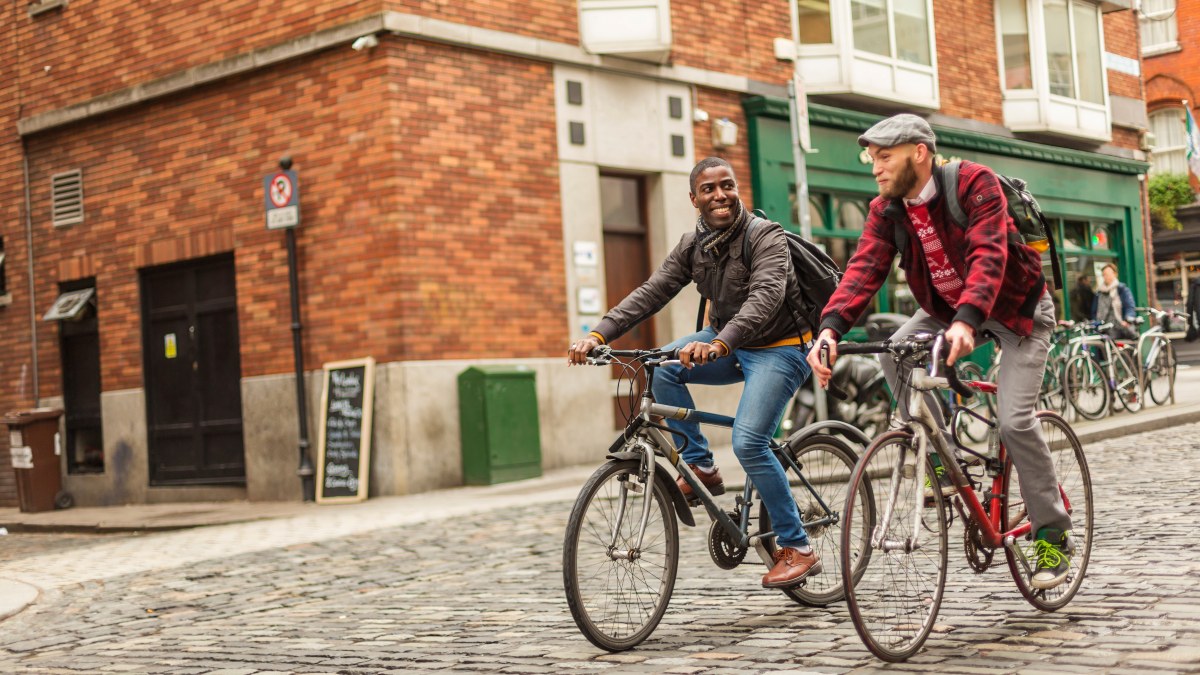
Ireland plans for another milestone year for cycling
Ireland aims to continue making great progress for cycling in 2022 with plans to develop a major cycling network for cities, towns and villages across the country. The network is part of the country’s Climate Action Plan to help reach climate targets.
In December 2021, the Irish government approved detailed plans for the development of a major cycling network across the country as part of a wider strategy to deliver on climate action commitments. The network is included in the annex of the government’s Climate Action Plan, a multifaceted strategy for achieving environmental ambitions across a number of different sectors.
The approval of the plan is a continuation of the great strides made for cycling in Ireland in 2021, which saw the country’s National Transit Authority dedicate €240 million towards cycling and walking infrastructure. This impressive commitment made Ireland the first EU member state to meet the European Cyclists’ Federation’s (ECF) recommendation of investing at least 10% of the national transport budget in cycling.
Actions will include updating the NTA’s National Cycling Manual, the publication of a national cycle network strategy and the development of cycling network plans for each local authority in the country. This will also be accompanied by further development and promotion of more greenway projects (trails built to be used exclusively by cyclists, pedestrians and other non-motorised transport) throughout Ireland.
“The Climate Action Plan embeds everyday cycling deeper into public policy, following on from the publication of the Programme for Government in June 2020 with its own ambitious commitments for investment in active travel,” said Dr. Damien Ó Tuama, the National Cycling Coordinator of ECF Member Cyclist.ie. “Our job now as advocates is to track progress with the implementation of the plan and hold the government to account if we spot any slippage.”
Cycling for a cleaner, greener economy and society
The Climate Action Plan has been described by the Irish government as a clear path towards “cutting emissions, creating a cleaner, greener economy and society and protecting us from the devastating consequences of climate change,” with cycling being recognised as a fantastic way to encourage public participation in reaching climate targets.
However, it has also been noted that achieving increased levels of cycling can only be done through the widespread implementation of safe and suitable infrastructure, which is why one of the key aims of the plan is to ensure that more space on Irish roads will be dedicated towards bicycles.

Image 1. Cycling for greener, cleaner economy and society
Means of achieving more cycling
One of the first steps being made towards more cycling in 2022 is the finalisation of an updated version of National Cycling Manual by the NTA. Previous versions of the manual have been criticised by Irish cycling advocates and politicians for containing poor infrastructure advice, such as the implementation of so-called “death strips,” which dangerously interweave cycle lanes and road traffic.
As we know, good policy leads to good practice, and with so much investment being made towards cycling infrastructure this year, it is critical that the updated version of the manual contains better guidelines for safe infrastructure and that existing dangerous advice is removed.

Image 2. So-called “death strips” which encourage the interweaving of cyclists and vehicles
The Climate Action Plan is also aiming to deliver more active travel projects in rural areas outside of Dublin, the Greater Dublin Area (GDA) and regional cities, with the Irish government seeking planning approval for four active travel projects in these areas. According to the Irish Times, the GDA cycling network is already set to receive 500 km of bike and walking infrastructure by 2025, while the four regional cities are due to receive a total of 275 km.
As well as this, several greenway projects are set to be approved and developed across the country. Ireland’s greenways, several of which are part of ECF’s EuroVelo 1 – Atlantic Coast Route, proved to be a major success story during the Covid-19 pandemic, growing significantly in popularity as a safe and enjoyable activity for people of all ages. 2021 was a monumental year for Ireland’s greenways with the allocation of €63.5 million towards the Department of Transport’s Greenway Programme, the highest single year amount ever allocated to this type of infrastructure.
Changing mindsets for sustainable urban planning
Stronger efforts to make cycling in urban areas safer are due to come into effect on 1 February 2022, when amended legislation will increase fixed-charge penalty rates for drivers of vehicles found parking illegally on footpaths, cycle tracks or in bus lanes. Irish Minister for Transport Eamon Ryan believes the legislation will encourage drivers to be more considerate of other road users and will promote active travel, stating “These increases should help improve the safety of all vulnerable road and footpath users by creating a more effective deterrent to these specific forms of illegal parking.”
Endeavours such as these are small yet important steps towards changing the collective mindset regarding how people move about and live in urban areas. A recent report by Hassell, an international architecture, design and urban planning practice, demonstrates in detail how Ireland’s urban areas have great potential to adopt more compact and sustainable urban planning designs, such as those based on the “15-minute city” concept.

Image 3. Cycling can help Irish cities capitalise on compact, sustainable urban design
However, the report, which was commissioned by Irish Institutional Property, also acknowledged that there is significant public resistance to idea of compact urban planning. It is in this sense that the bicycle, which has already been well established as a mobility champion for compact urban design, could not only negate environment damage caused by the transport sector, but could also help sway the collective mindset of the Irish public in favour of more sustainable urban planning through its undeniable and easily-recognised societal benefits.
ECF commends the work being done by the Irish government to increase cycling levels in the country as part of its broader plans to tackle the climate crisis. However, ECF also recommends that the cycling infrastructure implemented is of the highest standard possible, including safe and segregated cycle lanes that will encourage cyclists of all ages and ability to cycle more. The plans set out in the Climate Action Plan are encouraging signs for achieving effective modal shift in the country and must remain a priority over the coming years.
Regions:
Contact the author
Recent news!
Upcoming events
Contact Us
Avenue des Arts, 7-8
Postal address: Rue de la Charité, 22
1210 Brussels, Belgium









